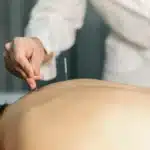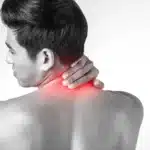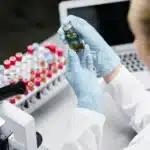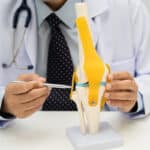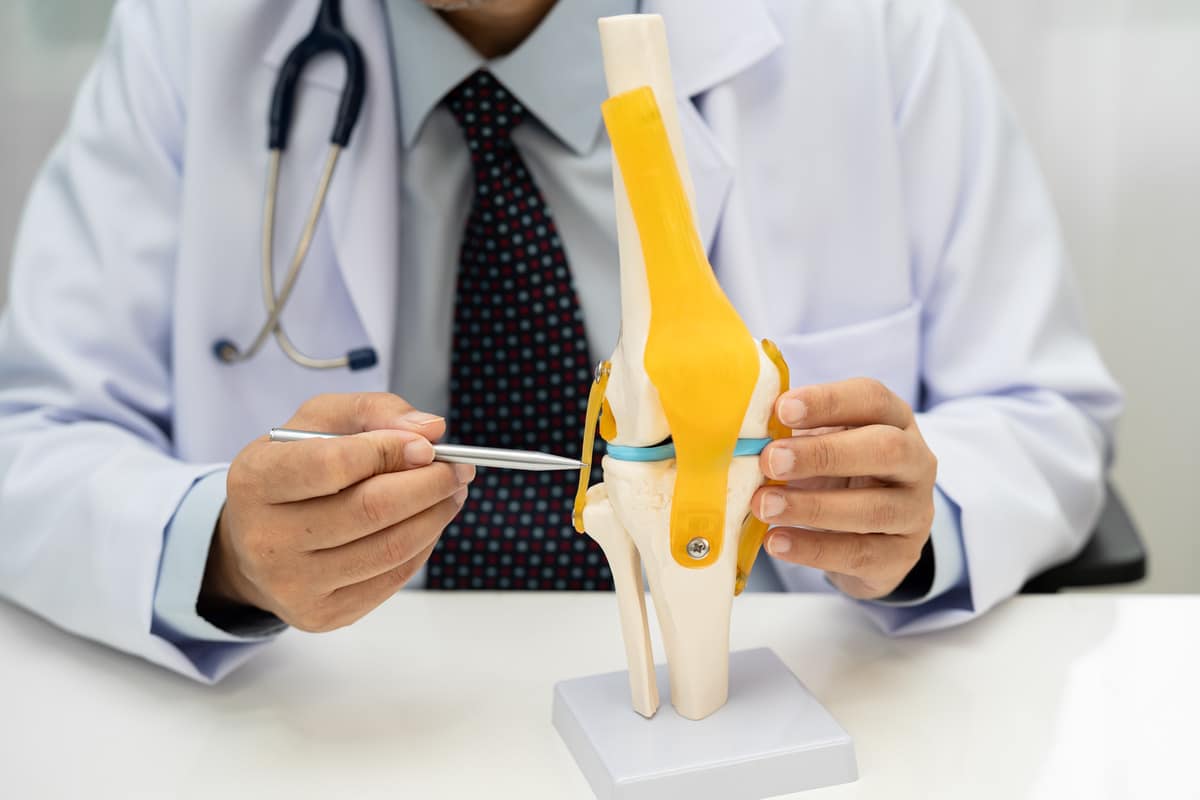
Degenerative disk disease is a condition that affects the spinal disks, which are soft, gel-like structures that act as cushions between the vertebrae in your spine. These disks play a vital role in absorbing shock and enabling movement. When they deteriorate, it can cause pain, stiffness, and reduced mobility. While degenerative disk disease is commonly associated with aging, it can also result from lifestyle factors, genetics, or injuries. In this article, we cover common causes, symptoms, treatment, and prevention of degenerative disk disease. Read on to learn more about this common condition.
What is Degenerative Disk Disease?
Degenerative disk disease refers to the gradual wear and tear of spinal disks, which can result in a loss of flexibility and decreased cushioning for the bones that make up the spine. In spite of its name, degenerative disk disease isn’t actually a disease but rather a condition that develops over time and can lead to chronic pain and reduced spinal function. The degeneration process often starts with minor changes, such as reduced water content within the disks, leading to shrinkage and even cracks in the outer layer of the disks. Over time, these changes can result in bulging, herniation, or even a complete breakdown of the disks’ structure. While most people experience some disk degeneration as they age, not everyone develops noticeable symptoms or complications.
Types of Degenerative Disk Disease
Degenerative disk disease can affect different parts of the spine and present different symptoms depending on where it occurs. Different types of degenerative disk disease include:
Lumbar Degenerative Disk Disease
This condition affects the lower back, which is placed under constant pressure by activities like sitting, lifting, and twisting. People with lumbar degenerative disk disease may experience lower back pain that radiates into the hips, buttocks, and legs. Activities such as bending or prolonged sitting can aggravate symptoms.
Cervical Degenerative Disk Disease
This condition affects the neck and can cause pain and stiffness in the upper back, shoulders, and arms. People with cervical degenerative disk disease may experience headaches or tingling sensations in their hands due to nerve compression. Poor posture and repetitive movements can exacerbate symptoms.
Thoracic Degenerative Disk Disease
This condition affects the mid and upper back, which are less common locations for disk degeneration. Symptoms may include localized pain, which can restrict mobility and interfere with daily activities.
Common Conditions Associated With Degenerative Disk Disease
Degenerative disk disease can contribute to the development of the following conditions:
Herniated Disks
Over time, wear and tear can cause spinal disks to bulge and then rupture, resulting in a herniated disk. A herniated disk occurs when the soft inner material of a spinal disk pushes through the tough outer layer surrounding it, potentially pinching nearby nerves. This can cause pain, numbness, or weakness in various parts of the body.
Spinal Stenosis
Spinal stenosis is the narrowing of the spinal canal. It can be brought on by herniated disks, bone spurs, and other by-products of spinal wear and tear. This narrowing can compress the spinal cord or nerves and cause pain, tingling, or weakness in the back, legs, arms, feet, and hands.
Spondylolisthesis
Degenerative disk disease weakens the structures that stabilize the spine. This instability can lead to spondylolisthesis, a condition in which a vertebra slips out of alignment and presses down on the one below it. This slippage can compress nearby nerves, causing lower back pain, stiffness, and numbness or weakness in your feet.
Adult Scoliosis
Wear and tear of the spinal disks can affect the spine’s alignment, contributing to the development of scoliosis in adults. Scoliosis is characterized by an abnormal curvature of the spine and can cause back pain, muscle fatigue, and posture issues.
Sciatica
One of the hallmark symptoms of degenerative disk disease is nerve irritation, which can manifest in the form of sciatica. When the sciatic nerve, a large nerve running from the lower back down each leg, is compressed, it can cause sharp, shooting pain that radiates down the leg.
Causes of Degenerative Disk Disease
The following factors can contribute to the development of degenerative disk disease:
Aging
As we age, spinal disks naturally lose their water content, which diminishes their ability to act as shock absorbers. This process can lead to cracks and tears in the disks’ outer layer, increasing susceptibility to further damage.
Injuries
Traumatic injuries, such as car accidents or falls, can accelerate disk degeneration. Even minor strains from improper lifting or overuse can weaken spinal disks over time. Injuries cause inflammation, which can result in pain and reduced mobility in the affected areas.
Genetics
A family history of degenerative disk disease can predispose you to developing the condition. Genetics determine the structure and resilience of spinal disks, making some people more susceptible to disk degeneration. If multiple members of your family have suffered from degenerative disk disease, it would be wise to take preventive measures.
Obesity
Excess weight places additional stress on the spine. Over time, this increased pressure can hasten the wear and tear of spinal disks and speed up disk degeneration. Maintaining a healthy weight can significantly reduce the risk of degenerative disk disease and alleviate symptoms in those already affected.
Smoking
Smoking interferes with blood circulation, depriving spinal disks of essential nutrients and oxygen. This impaired blood flow hinders the disks’ ability to repair themselves, making them more prone to degeneration.
Occupation
Jobs that involve heavy lifting, prolonged sitting, or repetitive motions can place pressure on the spine and contribute to disk degeneration. A sedentary lifestyle can weaken the core muscles that support the spine, increasing the risk of developing degenerative disk disease.
Symptoms of Degenerative Disk Disease
Here are some symptoms to look out for:
- Pain in the back and neck: Persistent pain is the most common symptom of degenerative disk disease and often affects the back and neck. The pain may worsen when you bend, lift, or twist and improve when you lie down and rest. Alternatively, it may feel worse when you’re sitting and better when you stand up and move around.
- Numbness and tingling in the extremities: Disk degeneration can lead to nerve compression, causing numbness, tingling, or a pins-and-needles sensation in the arms, legs, hands, and feet.
- Weakness in the leg muscles and/or foot drop: Nerve impingement caused by degenerative disk disease may lead to muscle weakness, making it challenging to perform tasks requiring strength or coordination. It may also lead to a condition known as foot drop, in which it becomes difficult to lift the front part of the foot.
- Difficulty walking and loss of balance, and coordination: Pain, numbness, and muscle weakness in the legs can make walking challenging. Loss of balance and coordination can occur when one side of the body is affected by the condition.
- Incontinence: Bowel and bladder control problems resulting from degenerative disk disease are a sign of severe nerve compression. If you are experiencing either of these symptoms, you should see a doctor right away.
How Is Degenerative Disk Disease Diagnosed?
To diagnose your condition, Dr. Robinson will review your medical history and ask you questions about your current symptoms. They will ask about the severity of your pain, when it started, what makes it better or worse, and whether it radiates to other areas like your arms or legs. Then, they will conduct a physical examination, which may be followed by imaging tests to confirm the diagnosis. X-rays can show disk height loss and irregular spinal alignment, while MRI scans can provide a clear view of soft tissues, including the disks and nerves. In some cases, a CT scan or discography may be recommended to assess the extent of the damage or pinpoint the source of the pain.
Degenerative Disk Disease Treatment
There are a number of things you can do to manage your symptoms and slow the progression of degenerative disk disease:
Non-Surgical Treatment
Conservative treatment methods for this condition include:
Physical Therapy
Certain exercises can strengthen the muscles that support the spine, improving stability and reducing pain. A physical therapist may also recommend stretches to improve flexibility and alleviate stiffness.
Medication
Over-the-counter pain relievers like ibuprofen and acetaminophen are often effective at managing mild to moderate pain. For more severe pain, your doctor may prescribe stronger medication.
Steroid Injections
Steroid injections can relieve pain, swelling, and inflammation. They are usually injected into the epidural space (the area around your spinal cord) or directly into a nerve or muscle.
Hot and Cold Therapy
Alternating between applying an ice pack and a heating pad to the affected area can help reduce swelling and pain. This form of treatment is particularly effective after physical activity that might aggravate symptoms.
Radiofrequency Neurotomy
This procedure targets the nerves responsible for transmitting pain signals from the affected area of the spine. Radiowaves are used to heat these nerves and prevent them from sending pain signals to the brain, providing pain relief for several months in some cases.
Manual Therapy
Massage and chiropractic adjustments can alleviate symptoms of degenerative disk disease and improve mobility.
Surgical Treatment
If conservative treatment for degenerative disk disease are ineffective, your doctor may recommend the following surgical procedures:
Spinal Fusion
Spinal fusion is a common surgical procedure in which a damaged disk is removed, and bone is placed in the space where the disk used to be in order to fuse two vertebrae together. This can stabilize the spine and reduce pain. However, the trade-off is a loss of flexibility in the part of the spine that has been fused.
Diskectomy
A diskectomy involves removing the damaged portion of a herniated disk that is pressing on a nerve. It aims to relieve pain and improve nerve function.
Foraminotomy, Laminotomy, and Laminectomy
Symptoms of degenerative disk disease can be treated with one or a combination of these procedures. A foraminotomy widens the openings where nerves exit the spine, while a laminotomy or laminectomy removes part or all of the bony arch covering the spinal cord to relieve pressure on the nerves.
Artificial Disk Replacement
An artificial disk replacement involves removing a damaged disk and replacing it with an artificial one to preserve mobility in the affected area. This procedure is an alternative to spinal fusion, offering pain relief while maintaining more natural spine movement.
Preventive Measures for Degenerative Disk Disease
Here are some ways in which you can prevent or slow the progression of degenerative disk disease:
Exercise
Performing exercises to strengthen the core and back muscles can reduce the pressure placed on spinal disks, preventing complications resulting from disk damage.
Quit Smoking
Quitting smoking improves blood flow and reduces inflammation, allowing the spinal disks to heal and function optimally.
Maintain a Healthy Body Weight
A diet rich in anti-inflammatory foods, such as fruits, vegetables, and omega-3 fatty acids, supports spinal health and can help to maintain a healthy body weight.
Treat and Prevent Degenerative Disk Disease with Oklahoma Spine and Pain Management
If you’re living with chronic back or neck pain caused by degenerative disk disease, Oklahoma Spine and Pain Management is here to help. We specialize in innovative, minimally invasive treatments and provide personalized care to alleviate pain and improve mobility. Schedule an appointment with us today!
Frequently Asked Questions (FAQs)
What are the stages of degenerative disk disease?
Degenerative disk disease can progress through mild, moderate, and severe stages. In the mild stage, symptoms like occasional stiffness or discomfort are common. In the severe stage, chronic pain, nerve compression, and significant mobility issues may occur.
Why does degenerative disk disease cause pain?
Degeneration causes disks to lose their cushioning ability over time, leading to increased friction between the vertebrae. This can irritate surrounding nerves and cause inflammation, resulting in localized pain or radiating discomfort.
Can I treat degenerative disk disease at home?
Yes, mild cases of disk degeneration can often be managed at home with rest, over-the-counter pain relievers, gentle stretching, and strengthening exercises. Applying heat or ice to the affected area may also help reduce pain and inflammation. However, if symptoms persist or worsen, it’s important to consult a professional healthcare provider.


